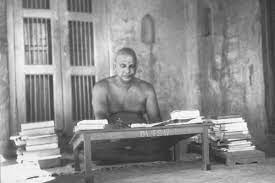
The history and significance of Diwali
Diwali, also known as Deepavali, is a major festival of Hindus and is celebrated with great fervor and enthusiasm in India and other parts of the world. It is a five-day festival that signifies the victory of good over evil, light over darkness, and knowledge over ignorance. The festival is celebrated by lighting diyas (lamps) and candles, decorating homes with colorful rangolis, exchanging sweets and gifts, and offering prayers to the deities. In this blog, we will delve into the history and significance of Diwali and understand why it is celebrated with such enthusiasm.
History:
The history of Diwali can be traced back to ancient India when it was celebrated as a harvest festival. According to Hindu mythology, it is believed that Lord Rama, the seventh incarnation of Lord Vishnu, returned to Ayodhya after defeating the demon king Ravana and completing 14 years of exile. To celebrate his return, the people of Ayodhya lit diyas (oil lamps) and decorated their homes with flowers and rangolis. This tradition has been carried forward and is still practiced today.
Another legend behind Diwali is the story of Lord Krishna, who defeated the demon Narakasura, and freed 16,000 captive women, restoring their dignity and self-respect. This victory of good over evil is also celebrated during Diwali.
Significance:
Diwali is celebrated for different reasons by different communities, but the underlying message is the same – the victory of good over evil, light over darkness, and knowledge over ignorance. The festival signifies the triumph of truth and righteousness over falsehood and evil, and the hope of a bright future. The festival also marks the start of the Hindu New Year and is celebrated as a time for new beginnings, prosperity, and good fortune.

The lighting of diyas and candles is an important part of the festival, as it signifies the triumph of light over darkness and the dispelling of negativity and ignorance. People decorate their homes with colorful rangolis and light up their houses with beautiful lanterns and fairy lights to welcome Goddess Lakshmi, the goddess of wealth and prosperity, into their homes.
The festival is also celebrated as a time for family reunions, feasting, and exchanging gifts. People wear new clothes, prepare traditional sweets and delicacies, and offer prayers to the deities. The festival of Diwali brings people together, and the exchange of gifts and sweets symbolizes the spirit of love, friendship, and brotherhood.
Diwali is a five-day festival, each day having its own significance and rituals.
Day 1: Dhanteras

The first day of Diwali is called Dhanteras, which falls on the 13th lunar day of Krishna Paksha in the Hindu month of Kartik. On this day, people buy gold, silver, and other metals to bring good fortune and prosperity to their homes. It is believed that buying new things on Dhanteras brings wealth and success.
Day 2: Naraka Chaturdashi or Choti Diwali

The second day of Diwali is called Naraka Chaturdashi or Choti Diwali, which falls on the 14th lunar day of Krishna Paksha in the Hindu month of Kartik. It is believed that on this day, Lord Krishna defeated the demon Narakasura, and freed 16,000 captive women. People light diyas and candles to commemorate this victory of good over evil.
Day 3: Diwali or Lakshmi Puja
The third day of Diwali is the main day of the festival, and is called Diwali or Lakshmi Puja, which falls on the new moon day or Amavasya in the Hindu month of Kartik. On this day, people worship Goddess Lakshmi, the goddess of wealth and prosperity, and Lord Ganesha, the god of wisdom and knowledge. It is believed that offering prayers to these deities brings good luck and fortune to the family.
In the evening, people light diyas and candles to welcome the goddess into their homes. They also decorate their houses with rangolis, colorful patterns made with rice flour, and draw footprints of the goddess entering their homes. They prepare traditional sweets and delicacies, and exchange gifts and sweets with family and friends.
Day 4: Govardhan Puja or Annakut

The fourth day of Diwali is called Govardhan Puja or Annakut, which falls on the first day of the Hindu month of Kartik. On this day, people worship Lord Krishna and prepare a mountain of food or Annakut, to offer to the deity. It is believed that Lord Krishna lifted the Govardhan hill to protect the people of his village from the wrath of Lord Indra, the god of rain and thunder. People also prepare a variety of delicacies and sweets, and offer them to the deity. The Annakut is then distributed among the people as prasad, a sacred offering.
Day 5: Bhai Dooj

The fifth and final day of Diwali is called Bhai Dooj, which falls on the second lunar day of Shukla Paksha in the Hindu month of Kartik. On this day, sisters pray for the well-being and long life of their brothers, and perform aarti, a ritual of offering prayers to the deity.
Brothers, in turn, pledge to protect their sisters from all evils and give them gifts as a token of their love and affection. It is a day to celebrate the bond between siblings and to strengthen the relationship.
In conclusion, Diwali is a festival of lights and is celebrated with great enthusiasm and fervor by people of all ages and communities. The festival symbolizes the triumph of good over evil, light over darkness, and knowledge over ignorance. It is a time for family reunions, feasting, and exchanging gifts and sweets.
The festival of Diwali is not just a religious festival but also has cultural, social, and economic significance. It promotes unity and brotherhood among people, and encourages them to spread love and happiness. The festival also brings economic benefits as it is a time for shopping and exchanging
Author
Darshita Nautiyal
(The images used in this podcast are not owned by Anime Devta, they are just to help the readers)

